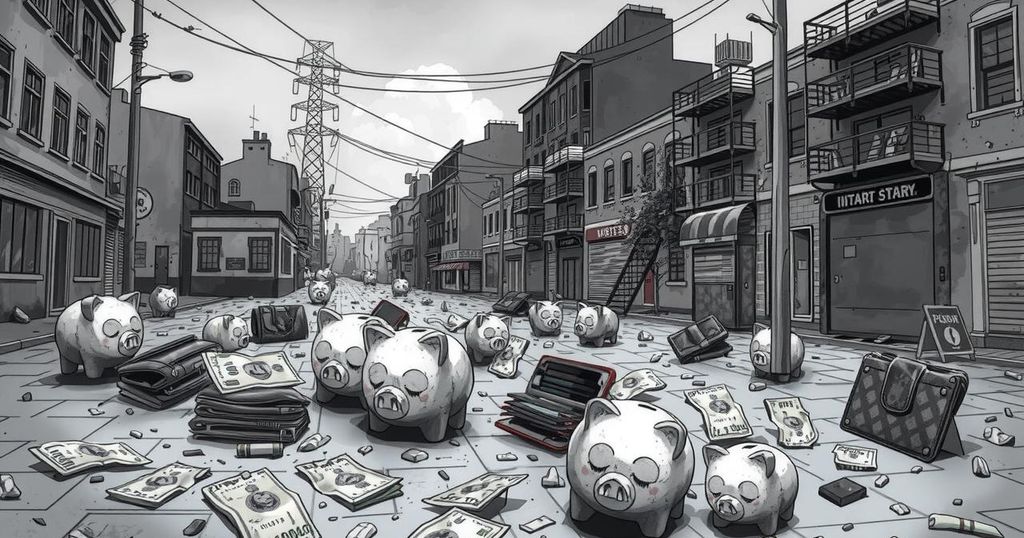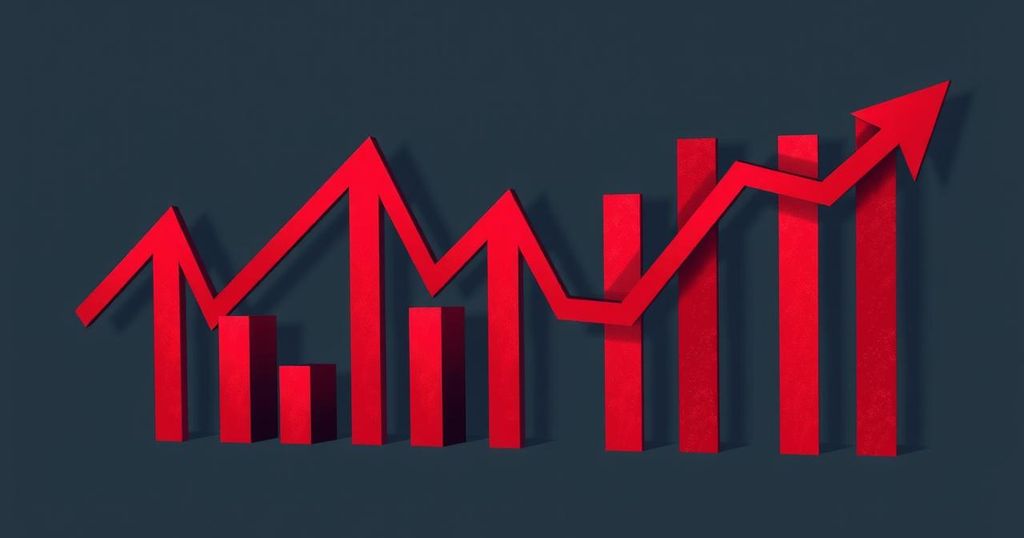The Iranian regime’s 1404 budget reveals economic desperation through aggressive tax hikes of 53%, targeting citizens as a revenue source while continuing to fund military and religious institutions. Tax increases in corporate, personal, and consumption categories manifest the government’s strategy to mitigate its fiscal crisis amidst international sanctions. This budget further strains ordinary Iranians as the cost of living escalates, ensuring that public discontent will likely intensify.
The Iranian government’s 1404 budget for the fiscal year 2025-2026 highlights its economic struggles, characterized by drastic tax increases and service fees. As a response to international sanctions and internal financial crises, the regime has imposed a 53% hike in taxes, including sharp increases in corporate and personal income taxes, while continuing extensive funding for the Islamic Revolutionary Guard Corps (IRGC) and religious institutions.
Projected at 2084 trillion tomans, the tax revenue signifies a historic surge that burdens the populace. Corporate taxes will increase by 73%, personal income taxes by 68%, and consumption taxes by 22%. Despite justifications aimed at fiscal responsibility, evidence suggests that economic mismanagement exacerbates Iran’s financial woes, leading to impractical revenue expectations and fixed expenditures.
The budget reflects a concerning devaluation of the national currency, presuming an exchange rate of 75,000 tomans per U.S. dollar. This assumption, coupled with a misleading projection of oil revenues, indicates that domestic inflation will pose serious challenges to households, making basic necessities increasingly unaffordable.
In a bid to generate revenue amidst lifting sanctions, the regime has targeted the population through significant price increases in residency services for foreign nationals, traffic fines, and educational fees. Fees for residence have soared by 500%, while traffic fines have jumped 60%, gathering massive income from individuals who already straddle poverty due to ongoing inflation.
Furthermore, students and young professionals face exorbitant hikes in education-related fees, with technical exam registrations more than doubling. A new hierarchy in vehicle registration fees symbolizes the regime’s discrimination, with foreign vehicles bearing the heaviest spikes. Similarly, higher exit taxes impose financial strain on travelers much to the detriment of would-be explorers.
The financial tactics employed by the Iranian government underscore its reliance on further burdening an already strained citizenry. As inflation persists, these measures inevitably threaten social stability, exacerbating public discontent while ensuring the continued financial support of state and military entities over essential public services.
The Iranian government’s 1404 budget emerges as a reflection of its dire economic situation, with extensive tax increases imposed on the populace while prioritizing military and ideological expenditures. Such strategies are likely to exacerbate public hardship, deepen poverty, and spark further resentment toward the regime, ultimately threatening social stability against a backdrop of enduring inflation and fiscal shortfalls.
Original Source: www.ncr-iran.org




